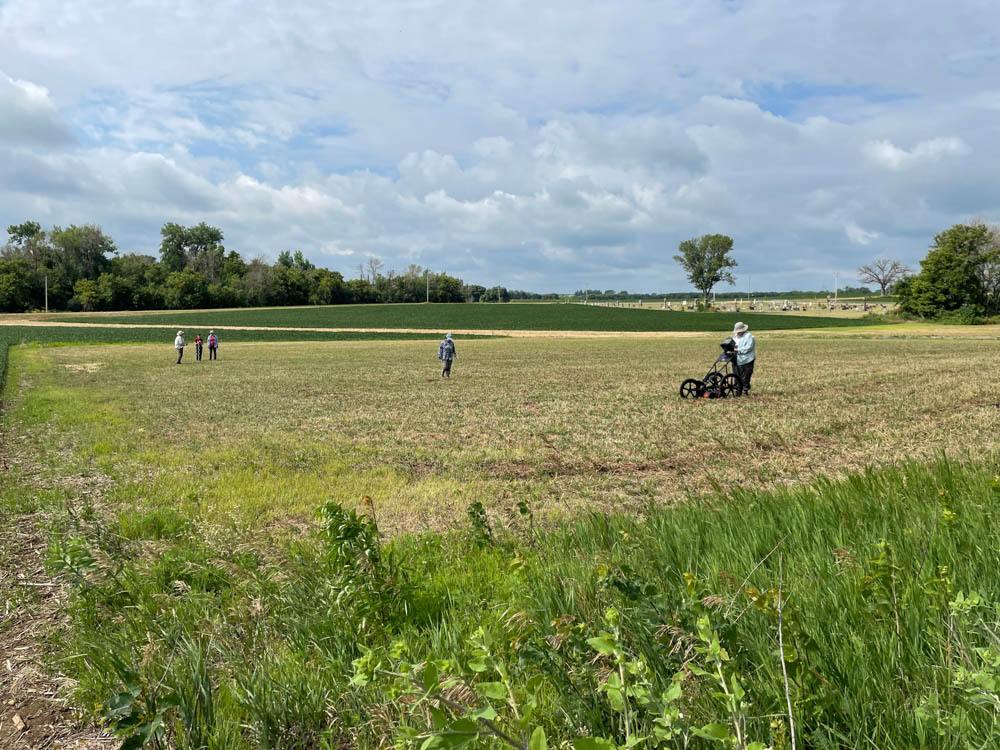In collaboration with the Mower County Historical Society and other local partners, the Hamline University Center for Anthropological Services (HUCAS) conducted a pilot study of the effectiveness of ground penetrating radar (GPR) to detect filled-in quarry pits at Wanhi Yukan, the Grand Meadow Chert Quarry Archaeological and Cultural Preserve, in southeastern Minnesota. This project was funded in part by the State of Minnesota from the Arts and Cultural Heritage Fund through the Minnesota Historical Society.
“Wanhi Yukan” means “there is chert here” in Dakota. The preserve, a 15-acre remnant of the original 175-acre open-pit chert mine, was purchased by The Archaeological Conservancy since the site was placed on the National Register of Historic Places in 1994. Wanhi Yukan once contained an estimated 2,000 pits dug by Native Americans to obtain Grand Meadow chert to manufacture stone tools. Historic aerial imagery indicates that the site was once much larger than the 15 acres included in the preserve today, but farming of the surrounding area has led to filling of many quarry pits.
In July 2023, HUCAS staff and Hamline students collected GPR data from two areas in the preserve. The first was in a wooded portion that has never been cultivated. The second was in a portion that was once farmed and is now restored prairie. Analyses of both datasets identified circular subsurface features suggesting the presence of filled pits. In June 2024, HUCAS excavated a test unit in the restored prairie area to determine if evidence of pit features was present at the base of the plow zone.
Shovel skimming revealed the edge of what appears to be a filled quarry pit at the northern end of the unit, containing a higher concentration of naturally and culturally fractured Grand Meadow chert than the largely sterile soil to the south. Although additional work will be necessary to confirm this interpretation, these results suggest that GPR is an effective means of locating buried quarry pits without disturbing what remains of this important site.




